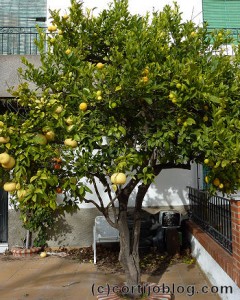
Seed Pots
This may seem a strange time to plant seeds. The reason why I can start seeds off now is because we have a place on the coast and one up in the mountains. The average temperature on the coast is about 14C and in the mountains it is 5C .The idea is to get the plants going and then transfer them to the mountains after March.
All the seeds here are plants that could cope with some low temperatures at the start.
I have planted several pots. If any of them germinate I will transplant them into pots or modules. Very tiny seeds are just sprinkled onto the surface. Bigger seeds are mixed into the soil with the ends of my fingers according to size. The soil is normal potting compost and at the top of the pots there is some finer seed compost which was bought at a garden centre.
Petunias (fire chief) wiki
Petunias are great flowers. They cope well with the hot sun and the don’t get too upset by an occasional lack of water and also they flower for ages. Petunias normally only cost about 1.20 euros each for a potted one but it will be good if we can get loads of them to use in the summer. Petunia seeds are very small so they are just spread on the surface of the flowerpot.

Snapdragons - Antirrhinum
Snapdragons Antirrhinum wiki
These are the sort of hard as nails plants we like at the cortijo. There are some snap dragons alive and flowering at the moment in the cortijo and the temperature has been down to -5C. A good quality about snaps is that they self-seed themselves and once there are a few growing they will establish a colony.
Tudela Lettuce (cogollos de Tudela in Spanish) wiki
Cogollos de Tudela are a really good Spanish lettuce that form very compact hearts. If you go to a Spanish restaurant you can order “cogollos” which is normally lettuce hearts drizzled with a sort of garlic oil. They are very healthy to eat and you can make a very quick almost 0 calorie snack by slicing a cogollo lettuce heart into 4 laterally and drizzling on some extra virgin olive.
Capers (capparis Spinosa) (alcaparras in Spanish) wiki
This is probably a waste of time because caper seeds are very difficult to germinate and require stratifying. They probably won’t germinate but you never know.
Parsnip (Pastinaca) (chirivía in Spanish) wiki
These were some seeds that I has in an old packet. Let’s hope they germinate.
 I have also planted lots of plants into seed trays. The trays cost about 2 euros. It is the best way of raising lots of small plants for later transplanting.
I have also planted lots of plants into seed trays. The trays cost about 2 euros. It is the best way of raising lots of small plants for later transplanting.
I normally buy my plants form a shop called Bolivar in Granada. (they cost about 8 cents each) This year I am going to try to grow some of them myself.
I have the following plants in the seed trays.
Cauliflowers (coliflor in Spanish) wiki
Cauliflowers do very well at the cortijo.
Spring onion (cebolleta in Spanish) wiki
The was a packet of White Lisbon which came free with Grow Your Own magazine.
Kale (Black tuscany) (col rizada in Spanish) wiki
There were some seeds in the bottom of a packet. It is a type of Curly Kale with purple leaves.
Leek (puero in Spanish) wiki
I bought these seeds from Al Campo supermarket.
Brunswick Cabbage (Col Repollo) wiki
 It is my plan to create a vineyard. We have a large price of land which has good soil and gets lots of light.
It is my plan to create a vineyard. We have a large price of land which has good soil and gets lots of light.







